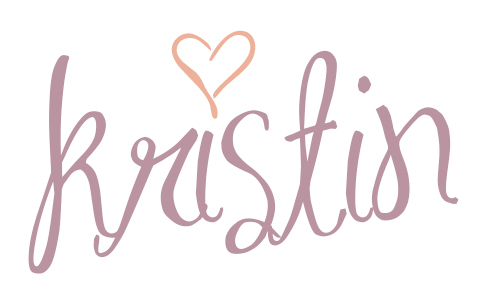Every child deserves an education and every child is capable of learning, however that looks for each individual child. Even the child that might give you an extra challenge is capable of learning, and capable of learning FROM you! This can feel next to impossible, but you can have success teaching your challenging child.
Let’s be clear that “challenging” does not mean “bad”. By “challenging”, I am just using one sweeping word to discuss the children who put up more of a resistance to learning. There are many reasons a child would challenge learning and an equal amount of strategies to help them overcome that.
This is not a new issue for homeschooling parents! Some children do struggle with not feeling like they have control and some children will struggle with the traditional school setting and expectations. The beauty of homeschooling is that you have the time, and love, for that child to figure out how they work best.

These 5 c’s are all ways to help your little challenger have a positive learning experience.
Connect
One of the most relevant quotes in working with children is “Kids don’t care how much you know until they know how much you care.” While this may be assumed when you’re teaching your own children, it never hurts to put a little extra effort into connecting with your challenging child, or all your kids for that matter.
“Kids don’t care how much you know until they know how much you care”.
The connection benefits both the child and you, the parent. As the child feels connected, they are more able to feel comfortable making a mistake and trying something new. They learn to trust that you won’t give them something they can’t do and that you won’t leave them alone with something too hard. They will trust that you are in it together.
As a parent, you get a better feel for how the child learns, how much to push, when to back off and how they learn as you pay attention to them. Your connection to them makes you better able to teach them.
Creativity
More than any of your other children, your little challenger needs a school experience that looks much different than traditional school. There is no cookie cutter solution for what your child needs in school but there are a variety of suggestions you could try. Don’t bind them with your experience of school.
What entices them? What excites them? What helps them focus? These are 3 questions you can ask yourself as you think of creative ways to engage the more challenging little learner.
Some possible suggestions are:
- A bouncy ball to sit on while learning.
- A change of scenery like a blanket outside, the living room floor or a coffee shop over a favourite drink.
- Use manipulatives – think blocks, cars, little plastic animals, playdough, or even favourite snacks. Goldfish crackers or chocolate chips make great counters. And they are fun to subtract!
- If you are not wanting them to practice writing with a certain activity, perhaps they can dictate to you. This can work well with math as well. You aren’t so much testing their writing as you are testing their math knowledge, so sometimes scribing for them will allow those lessons to go more smoothly.
- A change of writing utensil can sometimes make a difference – like a dry erase marker and a white board or a boogie board to change up the feel of the writing.
One of the biggest things is adjusting your expectations as a parent. Learning doesn’t only happen sitting nicely at a table!
Here are some other options for letting your high-energy child move while learning.

Choices
Kids, especially the more challenging ones, are looking to feel like they have some autonomy over their lives and their days. A way that you can help them feel this way is by giving them acceptable choices.
Acceptable choices are ones where you, the adult, are comfortable with either choice. An example of this may be “Would you rather do your schoolwork at the table or on your bed today?”. Perhaps you may have the liberty to say “Would you rather do your schoolwork this morning or in the afternoon?”.
This can be a great strategy to use when you see your child beginning to shut down or put their walls up. “I can see you are feeling a little frustrated. Would you like to write the answers yourself or would you like to say them out loud and I’ll write them down for you?”
You know your child best! Use choices you think will diffuse the problem and move you both towards a positive learning experience.
The key is to be sure you are able to accommodate whichever option they choose!

Confidence
Oftentimes, a reluctance to do something or an emotional outburst can be due to a lack of confidence in the material or their ability to learn it. Some children struggle harder to cope with that feeling of something being hard.
Building up a child’s confidence goes a long way in helping them prepare to learn. One great way to do this is to start out with things that are easy and comfortable for them. Let them read books you know they can read no problem. This reminds them that they CAN read!
If they’re struggling with a math concept, there is no problem with backing up and doing something they know really well to build up that confidence in their math abilities.
When they’re receptive, remind them that at one point, those easy things felt too hard. Let them learn from themselves that before something can be easy, it must be hard and be learned anyways.
Encourage them that you won’t leave them to do something hard alone and that you wont ask something of them you don’t think they can do. Encouraging phrases like “let’s do these together until you feel more confident” can go a long way to getting that frustrated child to pick up a pencil and keep going.
It should go without saying, but incase it doesn’t, praise! Praise that child for all that they do well!
Consequences
You know your child best, but there are times when consequences will be required. Don’t make empty threats. Be clear on your expectations and what the consequence will be if those expectations aren’t met.
It is good for children to learn that there is always a consequence for an action, be it good or bad. Our actions result in something – whether it’s a good consequence or bad consequence. Learning this is part of learning how to think through your actions and regulate yourself.
As a parent, you can tell whether what is happening with your child is as behaviour issue or a different issue. If you know your child is connected, capable, confident, tried creative strategies, had a choice and is still not cooperative, sometimes there needs to be a negative consequence!
Perhaps if work isn’t done, a fun activity will be missed. If laziness or lack of effort is a problem, a consequence could that that a child will redo any work not done neatly. Whatever it is, be sure the expectations and consequences are clear from the get-go.
Every child is capable and deserving of learning and, Mamas, you’re the best person for the job! He who gave you these children is mighty in you and He will equip you with the patience and wisdom you need if you ask. The love in your heart for your child is the most important tool in your toolbox. Carry on, Mama; you are doing a good work!


Leave a Reply